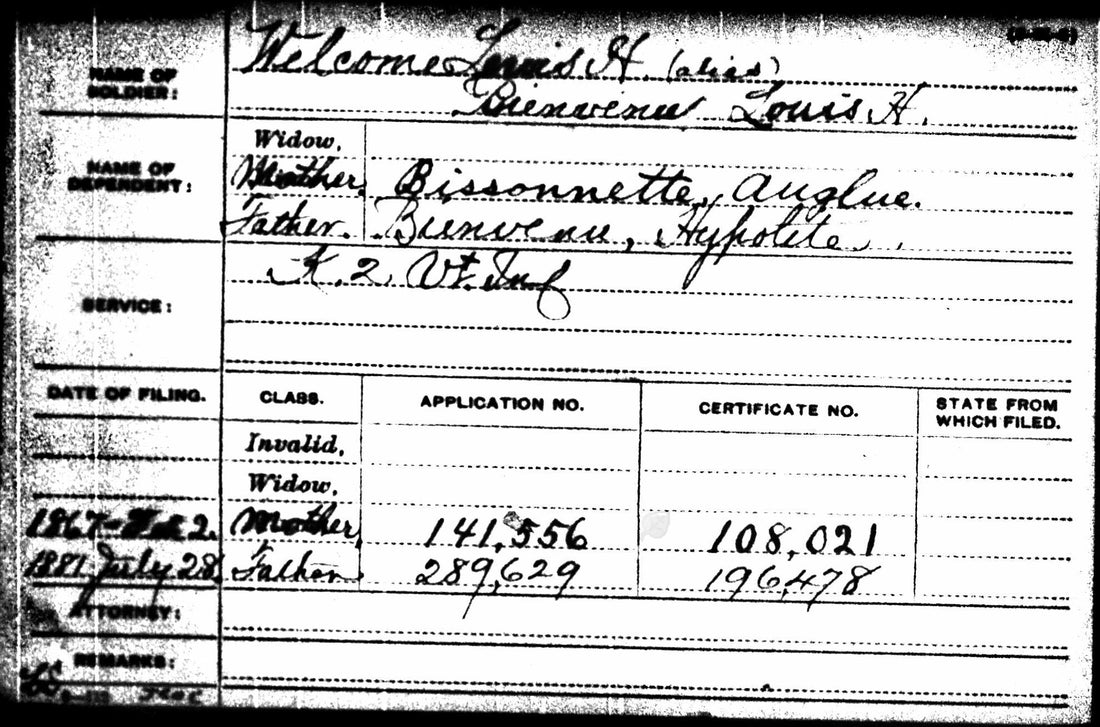
Civil War aliases
Share
Why does he have an alias? Occasionally you may find two names on a Civil War pension card, with one listed as an alias. Why is that?
It’s hard to have just one answer for this question. There are a variety of reasons why someone may have had an alias. It could have been as simple as a variation in spelling in the records, or as complicated as someone who abandoned his family and assumed a new identity. It usually will require looking through the pension file to get an explanation for why he used two different names.
One common misconception is that the alias was included when a substitute was hired. While it is true that men who were drafted could pay someone to serve in their place, the alias on the pension card is NOT the name of the man who hired the substitute. All of the records were filed under the name of the soldier who actually served, regardless if he was a substitute, a drafted man, or someone who enlisted voluntarily.
Some common reasons for a soldier using an alias include:
- Bounty jumpers who enlisted more than once in order to get paid bounty more than once. They would typically use different names each time.
- Soldiers who changed their name later in life. This is seen most often in soldiers from the US Colored Troops, as many who were enslaved changed their names after being emancipated.
- Soldiers who assumed a new identity at enlistment. This could have been done for various reasons, including someone who was trying to enlist underage, or maybe someone who had abandoned his family.
- Someone who bounced between Confederate and Union service and tried to remain undetected.
- A woman passing as a man. Some estimates show that around 500 women passed as men during the Civil War.
Scroll through the attached images to see why the following soldiers had aliases.

Louis Welcome/Louis Bienvenu: This one doesn’t seem obvious at first, until it’s realized that the French word for ‘Welcome’ is ‘Bienvenue.’ Louis used the Americanized version of his French last name.

Michael Kanelion/Michael Kennally: This appears to be as simple as a different pronunciation and spelling of the same name.

Jared Benjamin/Charles Sparks: Jared Benjamin served once under his real name. After being discharged, he abandoned his family and enlisted in a different state as Charles Sparks.

James Citizen was an African American who had been enslaved before the war. When he enlisted, he changed his name to avoid being found by his slave owner. In the pension file, he explained that he feared being killed if he was captured or found out. He enlisted under the common name of Abraham Johnson to remain anonymous.

Samuel Scharf/John Gilmore: Not only was Samuel was underage when he enlisted, he ran away from home and traveled to another state in order to enlist. He explained that his father was a Confederate sympathizer, and they disagreed with each other. Samuel felt strongly enough about his views that he wanted to join the Union war effort. He didn’t want to be found out by his father, so he said his name was John Gilmore when he enlisted.

James A. Kimball/Albert J. Kimball: This seems to be a case of first and middle name switch in the records.
The bottom line is that there are many different reasons why a soldier might have an alias. The only way to know the reason for sure would be to look at the pension file.

1 comment
Looking for Andrew,Charles and Theodore Goodenow who fought and died in the Civil War They were 3 brothers